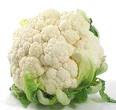
Ah yes, it’s that time of the year again. As the flowers start to bloom and the warm weather approaches, so does that urge to be free. Free of clutter in your closet, free of papers on your desk, and definitely free from a cluttered fridge and a piled up pantry.
Why Have You Done a Good Thing?
Cleaning out the kitchen every now and then is important for proper food safety, which protects us from potentially harmful food-borne disease. Plus, starting a new diet or continuing healthy habits requires a properly stocked and organized kitchen.
How to perform a "Your Secret Ingredient" Kitchen Makeover:
Open the Fridge
- Take everything out
- Look at expiration dates (don’t forget the condiments!)
- Check for mold, mildew, discoloration
- Throw out any take-out containers
- Examine the produce drawer for old fruits/veggies/herbs

- Give everything a good spritz. Disinfect your fridge and clean out any crumbs orspills.
- Put the goods back (animal protein on the lowest level as to not contaminate the other foods)
Open the Freezer
Things in the freezer do NOT last forever, despite what your grandma may say. SO, throw out anything that…
- You have had for more than 3 months
- Has clear freezer burn with icicles surrounding it
- You think, “oh wow, I forgot I had that”
- Is found squashed in the back corner
From this point on, start a labeling system. Whenever you put something into the freezer, use a permanent marker to label what the food is and the date you are putting it in there. Foods only last 1-3 months so keep track of what is in there and plan meals around your supply.
Open the Pantry
Throw out…
- Any opened bags/boxes (i.e. pasta, rice, chips, cereals, cookies, cakes, etc.) that are not sealed closed (clipped firmly is ok, but only for a few weeks)

- Any mis-shaped, enlarged, or bumpy cans
- Any expired products (Be especially weary of oils: regardless of what we may believe, they do not last forever, and actually have a relatively short shelf-life)
- Anything suspicious in the spice draw (i.e. discolored, dried out, missing proper smell). Spices don't last forever, so after a year it’s time to get some new gigs!
Start fresh. Keep things from wasting and keep everything organized by buying re-sealable containers for cereal, grains, chips, cookies, etc. The Container Store has a great selection! Or for great portion control, put your snacks in individual plastic baggies for convenient snacking!
Look Through the Cabinets
- Check out your pots and pans, if the bottoms are discolored or scraping off, it may be time to get some new equipment
- Look at your Tupperware. Somehow those tops can develop the “socks in the laundry” disappearance act. They don’t come back. So throw out any bottoms with no tops or tops with no bottoms and start fresh with a new batch.
- Give your k
 nives a good sharpening! You can either bring it in to a kitchen supply store (many havethat service available for a fee) or you can purchase a sharpening stoneand do it yourself. Make sure to hoan your knife after sharpening to get a good edge. Watch this video to learn more
nives a good sharpening! You can either bring it in to a kitchen supply store (many havethat service available for a fee) or you can purchase a sharpening stoneand do it yourself. Make sure to hoan your knife after sharpening to get a good edge. Watch this video to learn more
I hope this has convinced you to add the kitchen into your spring cleaning regimen- I know I will be down on the floor scrubbing! Think of all that productive cardio…
--Samantha Jacobs, RD CDN













